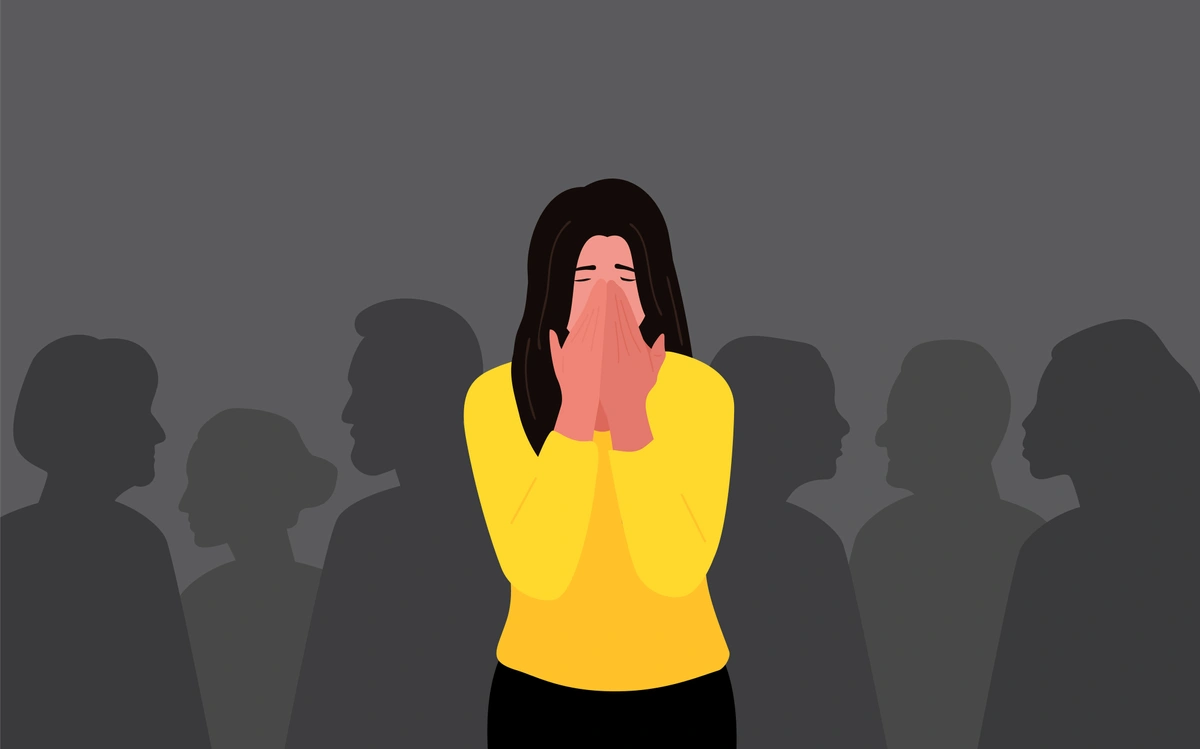Social Anxiety Disorder

Social Anxiety Disorder (Social Phobia)
Social Anxiety Disorder (SAD) was once referred to as “social phobia.” People with SAD tend to be extremely worried about what others think of them, and are preoccupied with these perceptions. They often feel scrutinized by others, causing them high levels of anxiety and other physical symptoms. Because of this overwhelming anxiety, people with SAD may go to great lengths to avoid social situations.
According to the National Institute of Mental Health (NIMH), about 7 percent of adults in the United States suffered from social anxiety disorder in the past year. About a third experienced serious impairment, and the rest had varied levels of severity. It is one of the most commonly diagnosed mental health conditions amongst adults in the United States.
The National Institute for Mental Health (NIMH) reports that women in the United States have a slightly higher rate of SAD (8%) than men (6%). There are also age differences in the prevalence of SAD. For example, the highest rates of the disorder were seen in individuals ages 18-29 years old, followed by those who were 30-44 years old. The lowest prevalence of SAD occurred among people ages 60 years and older (about 3%). The reasons for these differences are unknown.
SAD is not the same as being shy or introverted
Some confuse social anxiety disorder with shyness. However, SAD is more than being introverted or slow to warm up to others. People with SAD are terrified about not measuring up to the expectations of others, and become worried that they will act in a manner that will horrify others. For example, they may avoid eating with others to avoid the scenario of getting food caught in their teeth; They may avoid shopping in stores because they fear the salesperson will perceive their lack of sophistication. Although they understand intellectually that they are unlikely to act in an embarrassing manner, they can not translate that knowledge into their behaviors -- nor are they able to accept reassurance from others.
What it looks like
The key components of social anxiety disorder include the following behaviors, which last longer than six months:
- Having intense worry about what others really think about them
- Feeling nauseous or faint in the presence of others
- Physical symptoms such as heavily perspiring, heart palpitations, or blushing
- Avoiding eye contact
- Speaking very softly or physically positioning themselves away from the attention of others
- Avoiding places where there are groups of people, such as parties or classrooms
Individuals with SAD have had to overcome challenges others have not Many people can identify with the worry that they might make a mistake while in the company of others. For example, the fear of public speaking is extremely common. However, SAD is a condition that is much more severe than the average person’s fears of being judged. This intense fear can make functioning in a highly-social culture extremely uncomfortable.
Untreated SAD
Many people can identify with the worry that they might make a mistake while in the company of others. For example, the fear of public speaking is extremely common. However, SAD is a condition that is much more severe than the average person’s fears of being judged. This intense fear can make functioning in a highly-social culture extremely uncomfortable.
Outlook
With proper treatment, most adults with social anxiety can and do learn to become more comfortable interacting socially with other individuals.
In good company
Many prominent people reportedly have SAD, such as singer and actress/singer Barbra Streisand, singer Adele, and actress Sally Field. Individuals with SAD are not alone in feeling this way.
The current thinking on what causes SAD
Why do some people have SAD while others do not? No one knows for sure what causes Social Anxiety, but most experts believe the condition runs in families. Another possible factor is that the individual may not have developed social skills at the rate of their peers -- these are mostly learned behaviors which can improve with practice. In addition, stress and an individual’s daily environment may also contribute to the development of SAD.